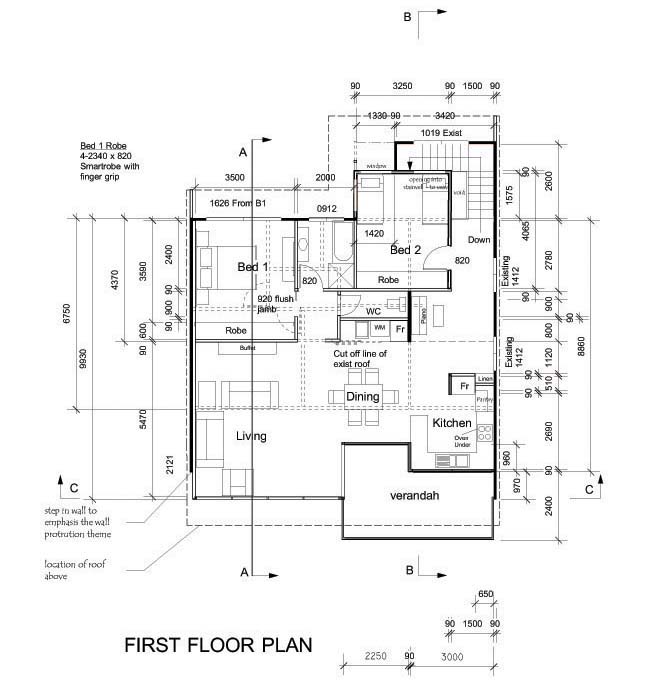A Construction Plan is a document that outlines the goals and objectives of a construction project. It also describes the tasks required to complete the project and how they should be executed. The construction plan will help stakeholders visualize the scope of the project and allocate resources for each activity. It will also help determine the amount of materials, equipment, and labor needed to complete the project. The construction plan will also need to include a material takeoff, which will itemize all construction materials required. This document will use measurement scales to determine the volume and area of each construction material.
Building a construction project plan
Building a construction project plan is essential to the success of any project. You need to have a realistic schedule that will guide your construction team. This is important for a variety of reasons, including cost, time, and reliability. It also helps to take into account the performance of different team members. To create an accurate schedule, you should perform thorough research and strategic planning for the construction project. You should also consider the quality and output of the finished construction project.
Before you begin drafting a plan, it’s important to consider how large the construction project will be. You also need to consider the site and the design of the building. Next, draw out a design sketch that identifies the different parts of the construction project. This sketch will also include information about colors, materials, textures, and the layout of the project site. You can also do research to determine the best location for the project and its scope.
Another important aspect of a construction project plan is resource management. You need to manage the schedule and budget of the construction project. One way to do that is by using a Gantt chart. You can use software like Microsoft Excel or Google Sheets to create one. Other programs will have templates specifically designed for construction project management. Once you have a plan in place, you can then outline the tasks and subtasks, as well as their timelines.
The construction project plan will evolve as the work progresses. You can add dependencies to ensure that tasks are completed correctly and in order. This way, you will be able to see how each task will affect the rest of the project. Once you’ve added dependencies, assign the appropriate resources to each task. This will ensure that each task gets the resources it needs to be completed properly.
As a construction project progresses, you’ll need to adjust the plan to accommodate any changes in conditions, work crew, or technical challenges. A construction project plan will also help you manage the project’s stakeholders and hold them accountable for their work. This will ensure that the project is completed on time and on budget.
Having a construction project plan will help you ensure that everyone on the team knows their role and can coordinate accordingly. As the project continues, your team will order materials, buy tools, and rent services. This phase can be challenging for a construction project, but a well-developed plan will make the process go smoothly.
Once you’ve created your construction project plan, your team can then develop a budget and estimated timeline for substantial completion. However, it’s important to remember that there is always a possibility that something will go wrong and the timeline may not be as accurate as expected.
Creating a construction schedule
When planning a construction project, it’s important to create a construction schedule that will help your team stay on schedule. The schedule should include tasks and the names of all the key stakeholders. These include the project owner, general contractor, suppliers, and subcontractors. The schedule also must be flexible, and it should be updated regularly.
Creating a construction schedule is critical to completing a construction project on time and on budget. It enables project teams to control quality measures and allocate resources. The schedule ensures that everyone on the team knows how much time is left to complete their work, and it prevents costly delays. The process of planning the construction schedule begins with selecting the technologies to be used, defining work tasks, estimating resources, and identifying possible interactions between tasks.
Once the tasks are identified, it’s time to assign them. Assigning tasks in a clear and concise manner helps reduce ambiguity and helps workers and contractors be more responsible. Creating a construction schedule also helps the team track the progress of subcontractors and suppliers. The schedule also allows managers to allocate resources in a way that minimizes downtime.
Creating a construction schedule can be done manually or by using a software tool. Software like GoCodes can track all construction tools, materials, and equipment. It also provides the last service date, location, and status of the items. It can also help track the amount of time a specific tool needs to be used and can help prevent project delays.
Another option for creating a construction schedule is using a Gantt chart. This is the most simple way to create a construction schedule and is commonly used in the construction industry. A Gantt chart presents all of the activities to be performed, the dependencies between activities, and their status. Another method is Critical Path Scheduling, which is more detailed and involves separating activities into “paths” or segments. This approach considers how long each activity is expected to take and how many resources will be needed for each activity.
There are several software tools available for creating a construction schedule. Many of these software programs allow for collaborative editing of the construction schedule, and can even be used in collaboration with others. Whether you’re a solo user or a team of workers, Toggl Plan can help you create a construction schedule that makes it easier to keep track of the project.
Creating a daily report
Creating a daily report for a project can be a valuable tool in construction planning. It not only provides insight into the progress of a project but also helps keep team members informed. The reports should be completed in a timely manner. It is important to add information every hour and every time a significant event occurs on the project.
Using a checklist helps to reduce the risk of error and increase the likelihood of accurate documentation. It frees up mental RAM that can be used for other tasks. Daily reporting apps often come with a checklist feature. It is also important to use common language and use plenty of pictures. Avoid using specialist terms, and use clear and concise descriptions of activities.
A daily report for a construction plan should contain information about the project, including the name, address, and author. The information will be useful in dispute resolution and can serve as a proof of the hours worked, materials used, and delays caused by weather. It is also important to record any photos taken during the construction process. The documentation should be signed by both the client and the project manager.For more updates
Creating a construction daily report will help you monitor the progress of your project, inform your team of any unexpected incidents, and protect your company from expensive lawsuits. However, creating such a report isn’t as simple as you may think. The task is time-consuming and requires a good memory. It may take a full hour or even a day to compile the report.
Creating a construction daily report is crucial for the success of any construction project. It serves as a detailed log of activities on the site, including site conditions, hazards, and workforce details. A daily report will also help you answer questions related to delays and billing. This documentation will be an important resource for your stakeholders and subcontractors.
A construction daily report is a document that a construction project manager or overseer files on a daily basis. It records the progress of the project, safety incidents, equipment usage, and visitors on the worksite. It keeps the project stakeholders up-to-date and avoids miscommunications.
In addition to tracking progress, these daily reports also inform employees, clients, and other team members about the progress of a project. These reports can be easily captured using a mobile application. The reports can be sent to the office or to all other team members in real time.

